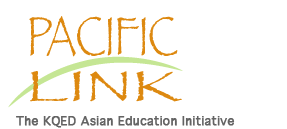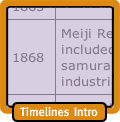Presented here are a global timeline, an Asia timeline, a U.S.
immigration policy timeline and a California timeline.
In operation from 1910 to 1940 , Angel Island Immigration
Station offers the earliest set of parameters. However, in order
to understand what happened during the first half of the 20th
century, you need to take into account events of the latter half of
the 19th century.
The Opium Wars in the
mid-19th century between China and Great Britain were emblematic to
the type of aggression Asia witnessed from European colonial
interests. Meanwhile U.S. Commodore Matthew
Perry's storming of Edo Bay introduced American Pacific
expansionist interests, while the Mexican-American
War concluded its domestic
continental growth. World War I was the first clash between a
dominant colonial imperialism and nascent independence and democracy
movements. World War
II pulled the seemingly
disparate strands of global events together, after which it could be
said that the world realized a new set of principles ought to shape
the course of world events.
Educators can use these timelines as an exploratory experience.
Comparing events and occurrences at each level -- global events to changes in U.S.
immigration policy, events in Asia to events in California, and so on
-- allows students to see patterns of cause and
effect , to see that global
events, political turmoil and foreign policy negotiations are all
tightly intertwined with the flow of immigrants who have found their
way to American shores.
The waves of newcomers followed the push and pull of historical
forces on both sides of the Pacific Ocean -- the lure of economic and
political incentives as well as the U.S. domestic reactions to these
trends. Moreover, the various iterations of the United
States' immigration policy fully reflect those external
happenings.






